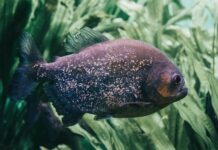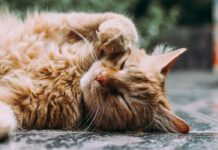Choosing and Caring For Healthy Love Birds
Love Birds are beautiful and intelligent small parrots.
Their name comes from the way they like to groom and snuggle with their companion — whether that companion is another Love Bird or a human.
Origins and Varieties
There are 9 species of lovebirds. They all come from the continent of Africa except for one species — the Grey Headed — which comes from Madagascar (an island off the coast of Africa).
Although there are 9 species of love birds, only 3 are commonly found in pet stores. They are:
- Peach Face – These are the most commonly available. They have a green body with a peach colored head, throat and face. There are also mutations seen such as yellow and pale blue bodied birds.
- Fischer’s Lovebird – Another relatively common pet lovebird. They have green bodies with orange and yellow on their head, face and throat. Their beaks are striking red.
- Masked Lovebird – Another common pet Love Bird. Their body is green and they appear to be wearing a mask that’s dark brown. They have a ring of yellow feathers around their throats, just underneath the mask – somewhat resembling a scarf.
Picking Out a Lovebird
Always buy a captive bred Love Bird (as opposed to a wild caught variety). If at all possible, purchase a hand-fed baby that is about 6 to 8 weeks of age. Young, hand-fed Lovebirds are tamer and much easier to train. You can train older birds and non-hand fed birds, but it’s a bit more difficult and time consuming.
Can You Keep One Lovebird?
Contrary to popular myth, you don’t have to keep two lovebirds — one will survive just fine if you’re prepared to offer them plenty of companionship. Like any other parrot, lovebirds need a great deal of attention and companionship every day — and if they don’t get it, there can be problems.
These problems can include depression, aggressive behavior, constant screeching and extreme plucking of their own feathers. If you’re not available for them a few hours a day, then you really should get them a partner to keep them occupied. This partner should be another lovebird of the same species.
It’s not a good idea to mix species of Lovebirds. For example, don’t mix your peach-faced lovebird with a black masked or any other variety. They can be highly aggressive towards other species.
Most Love Birds reproduce often, so be prepared. Unfortunately, it’s hard to tell the sexes of lovebirds just by appearance alone. You’ll need to get a DNA test performed. This can be accomplished through your veterinarian or you can mail a few feathers in to a DNA testing company.
Lifespan
While larger parrots such as Macaws can live 60 years or more, Lovebirds aren’t so long-lived. They typically live 10 to 15 years (with a few reported cases of 20 year old birds).
Housing/Cages
You should buy a large cage designed for parrots such as lovebirds. It needs to be large enough so that your single bird or pair of birds can stretch their wings out to their full span.
And try to get one constructed of mostly horizontal bars for them to climb on, and be sure the spaces between the bars are not so large that your bird’s head can get caught between them.

Provide 4 or 5 perches at different levels of the cage. Ideally, these perches will be made of different textures to help prevent arthritis. And provide plenty of safe toys for them to chew on and play with. Lovebirds are constantly chewing things – this helps to keep their beaks trim.
Feeding
Lovebirds do well on a good seed mix designed for parrots such as Love Birds. Do not overfeed and provide them with plenty of other food choices such as fresh, clean, vegetables and fruit that are safe for parrots such as carrots, bananas, peas and greens.
Exercise
Just like any other creature, lovebirds can become overweight and unhealthy when they don’t get enough exercise. How do they get exercise? Through flying. It’s important to let your birds out of their cage each day for free flight.
This should take place in a well-secured room with all windows and doors closed. And keep an eye on them when they’re around electrical cords or important papers, because they love to chew on just about anything they can get their beaks on.
Grooming
A love bird usually does a pretty good job of keeping his/her beak trim by chewing on seeds and other things. But they aren’t able to keep their nails trim, so you’ll have to trim them.
Buy a nail trimmer designed for birds (such as the guillotine type) and make sure you know what you’re doing before-hand. You can get guidance from your veterinarian, pet store, books, and/or online.
Like most other pet birds, Love Birds enjoy baths — it helps keep their skin and feathers clean and healthy. You should try to mist them every day with luke-warm. And many love birds enjoy taking showers with their owners.
Training
Training a love bird requires plenty of patience and persistence. Some birds learn faster than others. Young birds learn faster than older birds; and hand-feds learn faster than parent-feds. And many people say that the Peach faced species learn faster than the other species.
You should begin training them immediately by talking to them in a gentle, sweet tone every chance you get. And begin introducing your arm and hand into their cage while talking and singing to them. Do this a few times a day for 15 – 20 minute sessions. During these sessions start training them to hop on your hand or finger on command. Use a command such as “up” or “come here” while gently placing a perch, your hand or finger under their breast.
Although Love Birds chirp and sing all day, they don’t talk. But some love birds learn to mimic certain human tones.






















